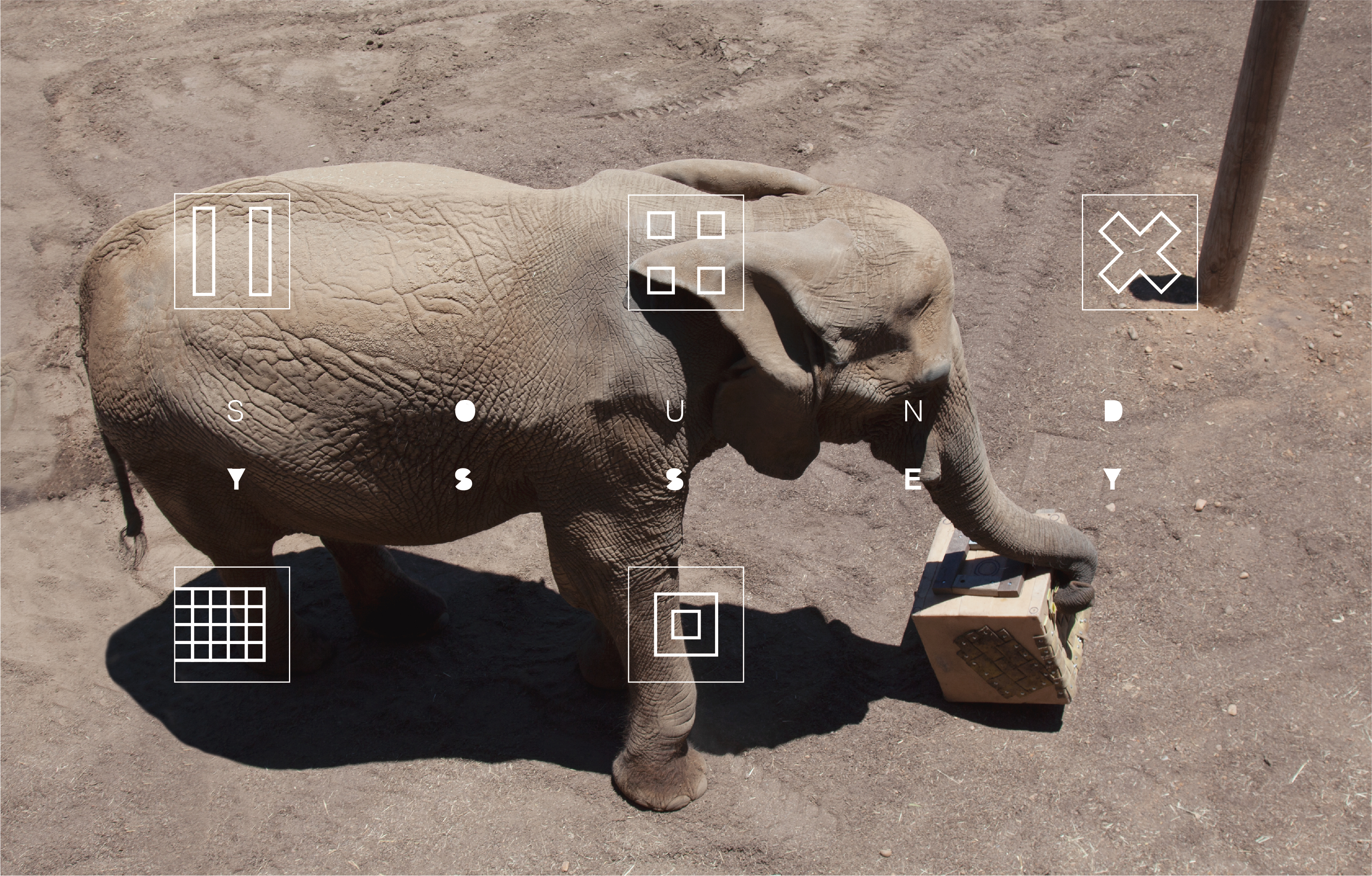SOUNDYSSEY
An auditory interface designed for animals in the zoo

Position: New York / San Diego
Duration: Mar - Aug 2019
Role: Research, Interaction Design, Engineering, Fabrication
Technic: BareConductive Board, circuit design
Partner: San Diego Zoo
Publication: Yating Wu, Harpreet Sareen, and Gabriel A. Miller. 2020. Soundyssey: Hybrid Enrichment System for Elephants in Managed Care. In 15th Conference on Tangible, Embedded and Embodied Interaction (TEI’ 21)
Exhibition: NYC Media Lab Demo Expo 2019 (New York, US)
Duration: Mar - Aug 2019
Role: Research, Interaction Design, Engineering, Fabrication
Technic: BareConductive Board, circuit design
Partner: San Diego Zoo
Publication: Yating Wu, Harpreet Sareen, and Gabriel A. Miller. 2020. Soundyssey: Hybrid Enrichment System for Elephants in Managed Care. In 15th Conference on Tangible, Embedded and Embodied Interaction (TEI’ 21)
Exhibition: NYC Media Lab Demo Expo 2019 (New York, US)
/ Overview
Soundssey is a modular system that relieves elephants of their stress by providing them with muti-sensory stimulus. The project works with the San Diego Zoo to explore the interaction patterns of animals, especially elephants, and try to create some reasonable & accessible products for them.
/ Research
Experiments have shown that auditory enrichment is an effective way for many animals [1]. Wells' research also proves that for captive Asian elephants, auditory enrichment can effectively reduce their stereotypical behavior [2]. According to the research of Enrichment Practices of zoos in the US [3], sensory enrichment such as an auditory based facility has not been applied in actual enrichment scenarios. In most cases, animals do not have the choice of sounds or the right to listen to sounds or not, so auditory enrichment is often challenging to apply to the field.
Because of the large differential between provided auditory enrichment and its perceived importance suggested in the figure, I decided to develop a modular toy with muti-sensory stimulus for elephants.
Because of the large differential between provided auditory enrichment and its perceived importance suggested in the figure, I decided to develop a modular toy with muti-sensory stimulus for elephants.
 Credit. Julia M. Hoy, Peter J. Murray, and Andrew TribeThirty Years Later: Enrichment Practices for Captive Mammals
Credit. Julia M. Hoy, Peter J. Murray, and Andrew TribeThirty Years Later: Enrichment Practices for Captive Mammals/ Design & Implementation
In the core of Soundyssey, I used a development board, a high-quality speaker, an external power, and an accelerometer module to detect rotation.The system was set to play different soundtracks whenever it has been flip over, and one of the six faces represents mute. After user testing, I added different textures on each side to help elephants connect different sounds with different physical patterns. Which allows them to better take control in the interactive process.
As an external container, I chose a 24x24 inches cube-shaped toy. I used a woven fire hose as a door for the system’s install. The woven fire hose is effective in dispersing the force and appears as a common material in facilities for elephants.
![]()
As an external container, I chose a 24x24 inches cube-shaped toy. I used a woven fire hose as a door for the system’s install. The woven fire hose is effective in dispersing the force and appears as a common material in facilities for elephants.




/ User Tests
Soundyssey was tested with four different elephants at San Diego Zoo, two of them are Africa elephants and the others are Asian elephants.
In the test, I found that the elephants have a strong interest in the music box and tried to flip it many times. After the flipping triggered the music switch, elephants showed the focus on the behavior (station, open ears, collect the sound like a nose). In the contrast group, the elephant quickly lost patience and began to show stereotypical behavior with the same cube-shaped toy just without sound stimuli.
In the test, I found that the elephants have a strong interest in the music box and tried to flip it many times. After the flipping triggered the music switch, elephants showed the focus on the behavior (station, open ears, collect the sound like a nose). In the contrast group, the elephant quickly lost patience and began to show stereotypical behavior with the same cube-shaped toy just without sound stimuli.
Moreover, the results not only proved the effectiveness of the system on elephant decompression but also showed that the elephants really tried to connect different physical patterns with sound stimuli. After an average of three tests, the elephants have gradually been able to relate different patterns to the corresponding sounds.
Reference
[1] Wells, D.L. (2009). Sensory stimulation as environmental enrichment for captive animals: A review. Applied Animal Behaviour Science,Vol.118(1), pp.1-11.
[2] Wells, D.L., Irwin, R.M. (2008). Auditory stimulation as enrichment for zoo-housed Asian elephants (Elephas maximus). Animal Welfare, Vol 17, pp. 335-340(6)
[3] Hoy, J. M., Murray, P. J., & Tribe, A. (2009). Thirty years later: Enrichment practices for captive mammals. Zoo Biology,29(3), 303-316. doi:10.1002/zoo.20254